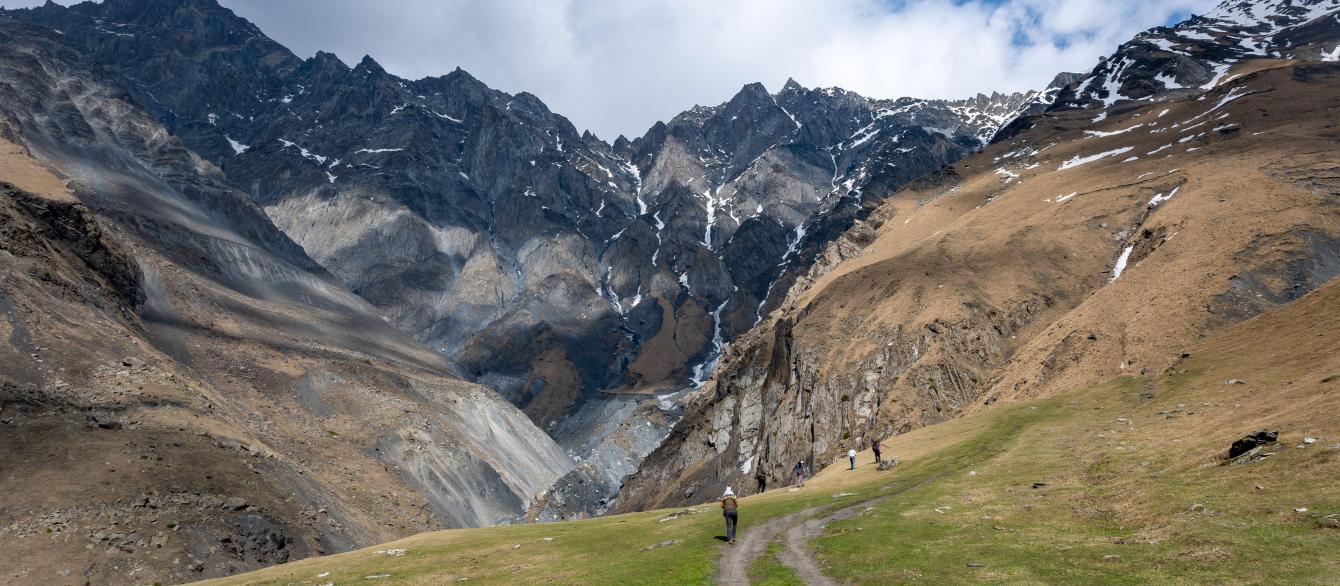Editor’s note: Russian investigators have brought terrorism charges against four citizens of Tajikistan following the March 22 attack that has left at least 137 dead and more than 100 injured.
The extremist Islamic State group took responsibility almost immediately and U.S. officials have largely accepted the claim, adding that the branch known as Islamic State-Khorasan, or ISIS-K, may be the one behind the attack. As Davis Center associate Vera Mironova pointed out to the Financial Times, ISIS-K has recruited heavily among Tajiks.
Mironova is one of numerous analysts who suspect that Russian security forces’ preoccupation with Ukraine-related operations, including stamping out dissent at home, has distracted them from monitoring security threats, including terrorism, and left Moscow more vulnerable to attack. (Vladimir Putin and his supporters have doubled down on suggestions that Ukraine was to blame, an accusation vehemently denied by Kyiv.)
In 2018, based on her fieldwork and interviews with militants from the former USSR, Mironova coauthored a report on jihadists from ex-Soviet Central Asia together with researchers Edward Lemon and William Tobey. The executive summary is reprinted below; the full text is available from Harvard’s Russia Matters Project.
Executive Summary
In the summer of 2018, the scenic, impoverished Central Asian nation of Tajikistan appeared in international headlines when Islamic State terrorists claimed credit for the killing of four Western cyclists who were run over by a car, then shot and stabbed to death. This was the first known terrorist attack on foreigners in Central Asia since a suicide bombing of the Chinese Embassy in Kyrgyzstan in 2016, and it appears to have been inspired by IS propaganda, though we do not know how much the group was involved in planning the attack, if at all. The violence serves as a jarring reminder that Islamist radicals from the five Central Asian nations once under Moscow’s control — Kazakhstan, Kyrgyzstan, Tajikistan, Turkmenistan and Uzbekistan — have become noteworthy players on the field of international terrorism. Thousands of radicals from formerly Soviet Central Asia have traveled to fight alongside IS in Syria and Iraq; hundreds more are in Afghanistan. Not counting the fighting in those three war-torn countries, nationals of Central Asia have been responsible for nearly 100 deaths in terrorist attacks outside their home region in the past five years. But many important aspects of the phenomenon need more in-depth study.
This research paper attempts to answer four basic sets of questions: (1) Is Central Asia becoming a new source of violent extremism that transcends borders, and possibly continents? (2) If so, why? What causes nationals of Central Asia to take up arms and participate in political violence? (3) As IS has been all but defeated in Iraq and Syria, what will Central Asian extremists who have thrown in their lot with the terrorist group do next? And (4) do jihadists from Central Asia aspire to acquire and use weapons of mass destruction? If so, how significant a threat do they pose and who would be its likeliest targets?
None of the answers is as straightforward as we would like, and far more attention should be paid to the differences and similarities among the five Central Asian states. But key findings generated by our research include the following:
- The civil war in Syria and the rise of IS in the Middle East have spurred an increase in the number of Central Asians participating in extremist violence beyond their home region; however, comparatively speaking, the international threat should not be exaggerated: Although Central Asians make up about 1 percent of the world’s population, they were responsible for 0.14 percent of the world’s terrorist attacks in the past decade, based on data from the Global Terrorism Database.
- While the causes of radicalization vary widely, field research by two of the authors, as well as other scholars, suggests that two significant factors are (a) real and/or perceived injustices or failures that lead to an extreme rejection of society and (b) affinity for “a culture of violence.” These factors can overlap with a search for adventure and/or a sense of belonging and meaning. Contrary to popular belief, relative poverty, religiosity, and lack of education do not seem to be strong predictors of radicalization.
- These authors’ research also suggests that a significant number of Central Asian extremists who went to fight in the Middle East became radicalized abroad, primarily while working in Russia or Turkey.
- Other scholars’ research suggests that recent terrorist attacks and plots with a jihadist agenda in peaceful countries have more often been the work of local residents without combat experience than of former combatants.
- The next steps of Central Asian jihadists in foreign combat zones are exceedingly difficult to predict. Those who manage to escape from Iraq and Syria will have three basic options: to continue their fight in a different conflict zone, Afghanistan being the most likely; to go back to Central Asia, which does not seem like an option many find appealing; and to settle in a third country, whether to live peacefully or to keep fighting.
- The evidence indicates that Afghanistan-based militant groups, most notably the Islamic State Khorasan Province (ISKP), are targeting Central Asian recruits. But the inflow of foreign fighters is less intense than to Syria and Iraq in 2014-2015.
- While lone attackers attempting to commit acts of violence—whether inspired by radical propaganda or other factors—will continue to be difficult to identify before they do damage, policymakers and law-enforcement authorities would be wise to cooperate across borders in tracking those Central Asian extremists who plug into networks of like-minded radicals and/or criminal groups.
- Much work needs to be done to provide better security for the radiological sources in use in Central Asia; however, the threat vectors for chemical, biological, radiological and nuclear weapons involving Central Asia appear not to pose an imminent danger either within the region or outside it.






